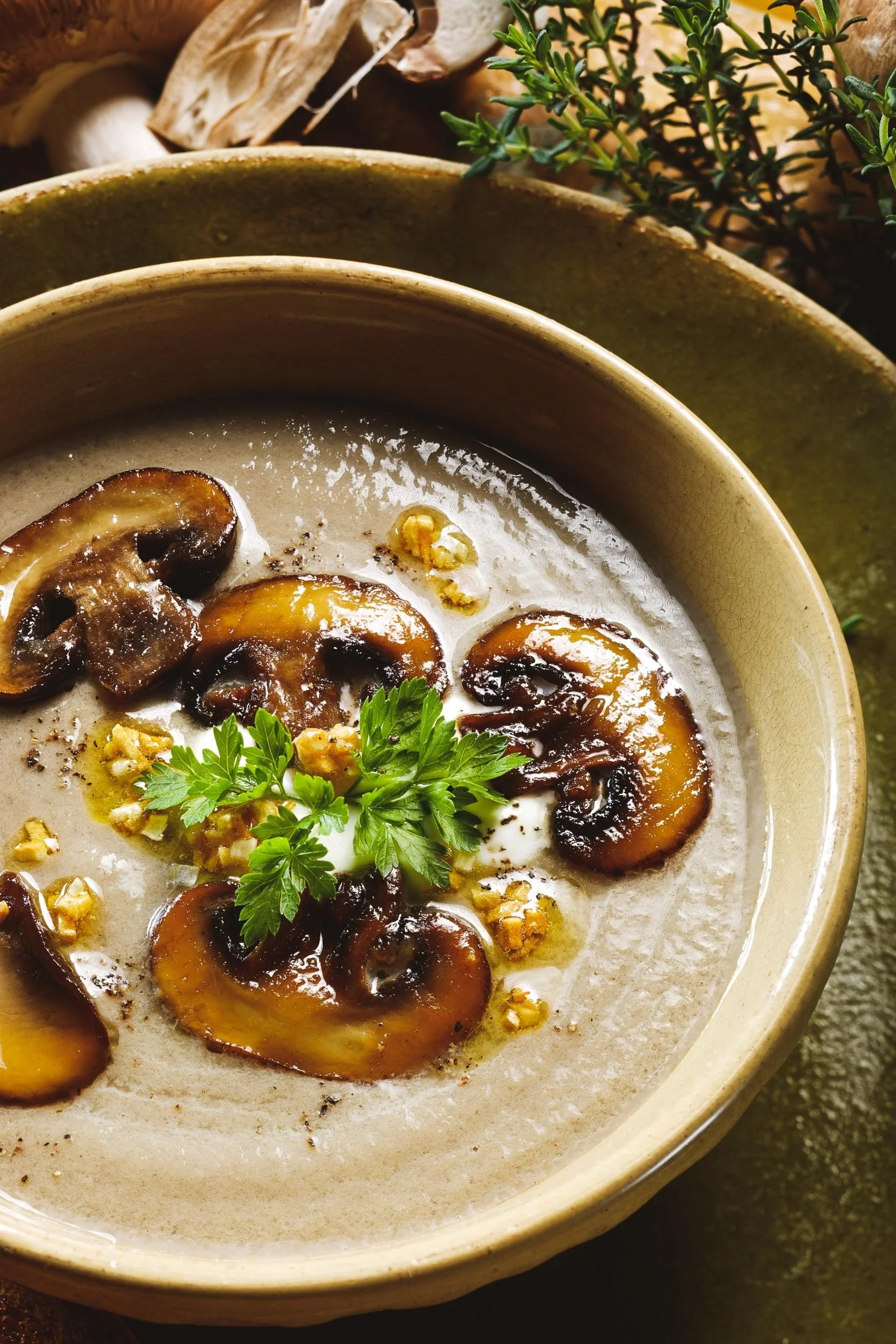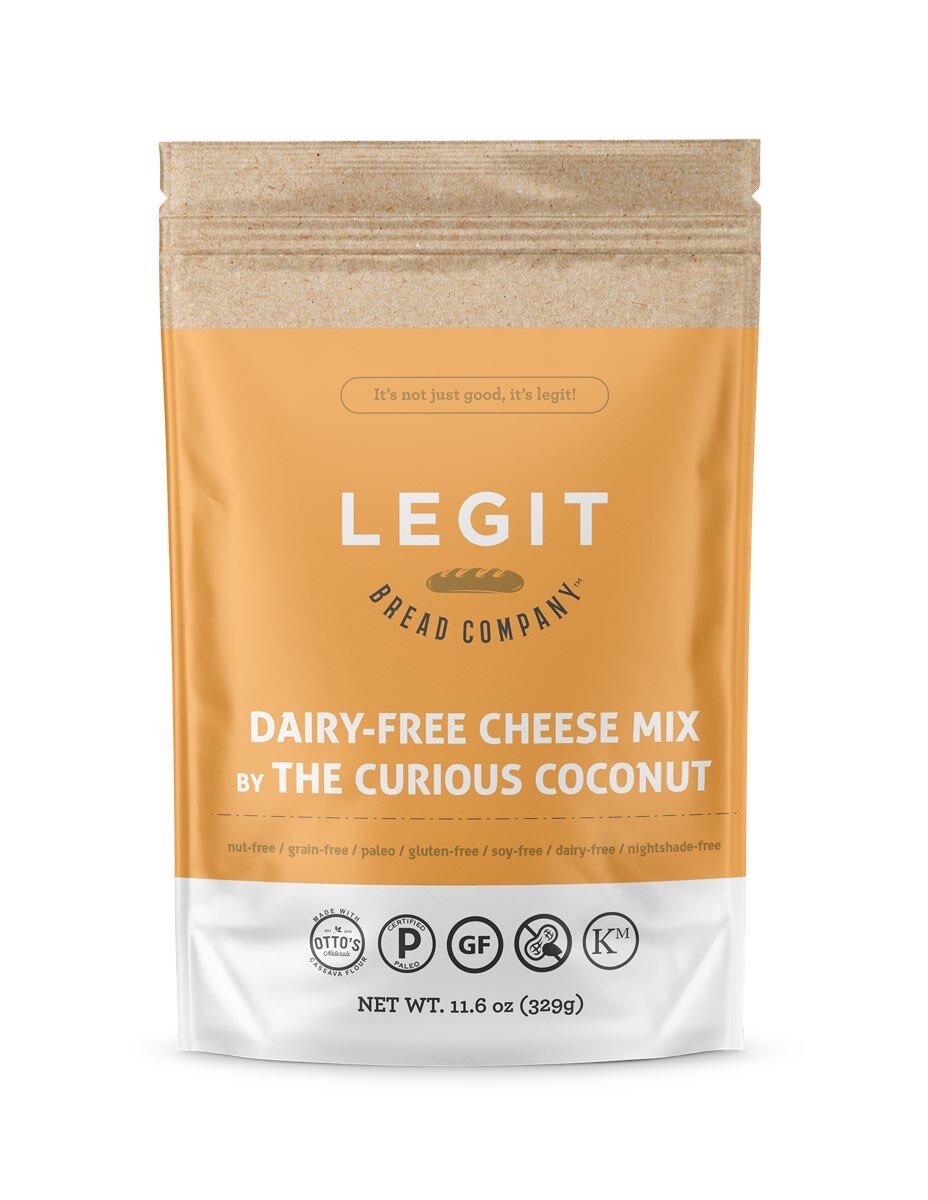My husband, whose parents are from Puerto Rico, first introduced me to sancocho. It is a traditional hearty meat stew made with plantains and various tropical starches and squash. It is usually made with the cooking base sofrito, which, depending on whose kitchen you are in, is made with mild and hot peppers and sometimes also tomato. Chunks of corn on the cob are also traditionally included with the other starches, too. Since I can't eat corn and nightshades (including peppers and tomatoes) right now on the autoimmune paleo protocol, I made an AIP variation that is just as delicious as the traditional style.
If you ask 10 different Puerto Ricans exactly what should go into a batch of sancocho, you will likely get 10 different answers. Here are my suggestions: try to at least have both ripe and green plantain, a squash or pumpkin (called "calabaza" in Hispanic markets), and at least two of the following: malanga, yautía, taro, yuca. Bonus if you can find a true yam (NOT a sweet potato), called ñame in Spanish. And, if you tolerate it and would enjoy it, go ahead and include the fresh corn on the cob cut into quarters.
My sancocho includes: malanga lila, malanga blanca, taro, calabaza, yuca, green plantain, and ripe plantain.
Unless you live in a city like Miami where even small corner stores stock Hispanic/Latin American ingredients, you may have to find a specialty Hispanic grocery store to find all of these ingredients. You may be able to find taro and yuca in an Asian specialty store, too. If you can't find them fresh, be sure to check the frozen section! Buying frozen can actually save a lot of prep time with peeling, and sometimes I seek out pre-peeled frozen packages for that reason (especially for yuca!!)
All of these starches will naturally thicken the broth as they cook, making it rich, velvety, and incredibly hearty. This isn't just a soup for cold winter days; remember, Puerto Rico is a tropical island and I find this dish to be satisfying and delicious even on hot summer days.
Malanga, Yautía, and Taro
Malanga lila. Notice the pink just beneath the skin?
White malanga: the potato of the autoimmune protocol.
Are malanga and yautía the same thing? The Internet is confusing on this topic: the University of Florida County Extension Office's info pamphlet on malanga says yes, they are the same. My Puerto Rican mother-in-law vehemently argues that no, they are NOT the same thing. Wikipedia adds to the confusion on the page dedicated to their genus. There, two different species are listed for yautía (Xanthosoma caracu) and malanga (Xanthosoma sagittifolium), but clicking on the malanga link takes you to an article that says that they are the same thing! So, I'm not really sure what the answer is myself. It's a hot debate topic on blogs, cooking forums, and botanical pages.
Regardless, they (it?) are both corms (similar to, but not the same thing as a tuber). They are related to and very similar to taro (genus Colocasia), which you may be more familiar with. To make things even more confusing: taro can sometimes be labeled as malanga isleña (it is at my corner market!) even though it is definitely not malanga!
Taro, labeled as malanga isleña, even though it belongs to a different genus.
I have actually never been able to find anything labeled as yautía in my local stores here in Miami; instead, I can find 2 different types of malanga -- lila (lilac) and blanca (white).
I've seen a lot of websites touting that malanga is one of the most hypoallergenic starches on the planet, but my attempts to find scientific verification of this statement have left me empty-handed. I don't doubt it, but I wish I had a credible source to back it up.
Yuca
Yuca, tapioca, manioc, cassava -- different names for the same thing!
Do you know where tapioca comes from? The yuca root! It's called various names in different parts of the world, including cassava, tapioca root, and manioc root. These are all the same thing! Yuca looks similar to malanga, but instead of having a dry, slightly hairy skin, it is thick and smooth and usually coated in a wax. But, unlike malanga, they can vary in size greatly.
When buying for sancocho, I try to buy a yuca root that is the same size as 1 or 2 pieces of malanga.
I dislike peeling fresh yuca, because the outer bark is so thick that you must use a knife. For that reason, I often purchase pre-peeled frozen yuca for all my cooking needs.
Important note about yuca:
Yuca is potentially a gluten cross-reactive food. Meaning, if you are Celiac or non-celiac gluten sensitive, your body may react to you eating yuca the same way that it reacts to you eating wheat. This happens when the antibody that your body produces against gluten mistakenly reacts to yuca's proteins. There isn't a lot of research on yuca's cross-reactivity in the literature, but yuca is one of the 24 foods tested in the Cyrex Labs Array 4 (gluten-associated cross-reactive foods and foods sensitivity). It appears that Cyrex based their array off of this paper (full text free), which actually found that yuca (called tapioca in the paper) was not significantly different from the control for cross-reactivity. Here are the positive results from that paper, in order of strongest to weakest cross-reactivity: α- and β-casein (milk protein), yeast, casomorphin (milk protein), one oat cultivar (but another was negative), fresh corn, milk, millet, milk chocolate (because of the milk), instant coffee, rice, milk butyrophilin (a protein), and whey protein (from milk).
Bottom line: you may want to be careful with yuca (and the other 23 foods) if you have gluten sensitivity. Or, if you are gluten-free and still have symptoms, get tested while you are still eating all of the foods . The test will NOT be accurate and potentially show a false negative if you are not routinely eating the foods at the time of your blood draw.
This stew is delicious with or without yuca -- just substitute more of one of the other ingredients if you are concerned.
Ñame (yam, not sweet potato)
Ñame is the Spanish word for "yam". There is a lot of confusion about yams and sweet potatoes in the United States. I get so frustrated when I see recipes that call for yams, but what they really mean for you to use are sweet potatoes. They are NOT the same thing! Yams are monocots, while sweet potatoes are eudicots -- they are in totally different botanical families.
I haven't cooked with a ñame yet, even though one of my local stores carries them on occasion.
Plantains
Plantains are the BEST part about sancocho -- and my husband agrees. You should be able to find plantains somewhere near you....I've even seen them in Wal-Mart and Target. Some recipes call for only ripe plantain, but I prefer to use both green and ripe, or even plantains that are in the awkward in-between phase. You don't have to wait for plantains that are no longer green to become fully ripe to use them: put them in soup!
Calabaza (pumpkin or squash)
In many of the specialty Hispanic stores that I have been in, as well as in local stores here in Miami, I've found chunks of some type of tropical pumpkin labeled simply as "calabaza". It doesn't look like the type of pumpkin that you make Jack-O-Lanterns out of. Instead, the rind is lighter, more yellow, and with green accents or even large green patches. The rind is also usually textured with small bumps. I wish I knew what specific variety it is! My search online has not helped me to identify it. But, I bet you that you can find the same thing packaged in your local Hispanic specialty store.
I think you can use just about any orange-fleshed winter squash or pumpkin in this recipe -- butternut squash would probably be the closest approximation to "calabaza".
Meat and Broth
Chicken hearts. I cut them each into 4-6 pieces for soup.
Beef tendon. Learn how to cook it here.
You can use your favorite meat and broth with sancocho -- beef, pork, and chicken will all work and taste great. To make my last batch ultra nourishing and nutritious, I actually made it using chicken hearts and slow-cooked beef tendon and I spiked the beef bone broth with some of the beef tendon broth for an extra boost of gelatin and collagen.
Whew! That's a lot of background info on the ingredients. I hope you find it helpful, and that you will give this traditional, hearty soup a try!
Batch cooking tip:
I like to buy double the starchy ingredients, peel, chop, and slice everything at the same time, and put half of everything in a big gallon freezer bag so that it's all ready to go the next time I want to make a big batch. These starches freeze very well, and you can even find kits in the freezer section of some Hispanic markets with everything included, but these kits will always have corn.
Puerto Rican Sancocho (autoimmune paleo version; nightshade-free, grain-free)
An autoimmune paleo protocol compliant Puerto Rican sancocho (with optional beef tendon and chicken heart for extra nutrition)
Prep time: 15 minutes
Cook time: 45-60 minutes
Total time: 60 - 75 minutes
Ingredients
- 2 Tbsp cooking fat (lard, tallow, coconut oil, palm oil, etc.)
- 1 onion, peeled and diced
- handful (6-10) culantro leaves, minced (substitute cilantro if you can't find it)
- 6 cloves garlic
- 3 ribs celery
- 1 pound meat - such as cubed beef, pork, or chicken (I used quartered chicken hearts)
- optional: 1 pound slow cooked beef tendon (recipe here)
- 1 malanga lila, peeled and diced
- 1 malanga blanca, peeled and diced
- 1/2 taro, peeled and diced
- 1 small yuca (approximately the same size as the malanga), peeled and diced
- 1 small piece of calabaza or small butternut squash, peeled and diced
- 1 ripe plantain (mostly black skin), peeled and sliced
- 1 green plantain, peeled and sliced
- salt and ground black pepper (not a nightshade) to taste
- about 3-4 quarts homemade beef, chicken, or pork bone broth
Cooking Directions
- Rinse and peel all starches. You can use a sharp vegetable peeler (I use this one) to peel the malanga and taro but you will need to use a knife to peel the yuca and the calabaza. The yuca is easier to peel if you cut it in half and then slice the bottom off so that you can stand it up vertically. Then, just cut downward to remove the peel in strips. Once peeled, cut in half lengthwise and remove the fibrous inner core and discard. To peel plantains, cut the tips off with a knife and then cut a slit down the length of the fruit. It can help to cut the fruit into halves or quarters first. Use your fingers to lift the peel at the slit. This will be easy on the ripe plantain, but harder on the green. Use your knife to clean up any stray fibers from the green plantain if necessary. Slice plantains crosswise into discs about an inch wide. Dice everything else into about 1 inch cubes. Place all cut starches in a large bowl and set aside.
- Peel and dice onion and celery, mince culantro, and press garlic (or mince).
- Heat fat in a 5 quart or larger pot over medium low heat. Add meat and stir to brown all sides. Once meat is mostly browned, add onion, garlic, celery, culantro, salt, and ground black pepper (not a nightshade) and stir to combine. Continue to cook until onion is translucent.
- Use a wooden spoon to scrape up any browned bits that are stuck to the bottom of the pan and add a few cups of broth to deglaze the pan. Add cut starches and remaining broth (about 3-4 quarts total, but adjust based on how full your pot is). Stir to combine everything. If using beef tendon, add it now.
- Increase heat to medium high and allow to just come to a boil, then reduce heat to a simmer. Cover pot and allow to simmer until all starches are tender. Check the pot after 30 minutes and every 10-15 minutes thereafter. Mine is usually done after about 45 minutes. Letting it cook longer will make the broth even thicker, but cooking too long will caues the ripe plantain and pumpkin to fall apart.
- Serve and enjoy! This is a true one pot meal and is very filling as is. No sides necessary!
- NOTE: This recipe is for a big batch and, unless you are feeding a crowd, will give you plenty of leftovers.
Want to learn a LOT more about gelatin?
I added beef tendons and beef tendon broth to this recipe to give it an extra boost of gelatin and collagen. After all, since I'm healing leaky gut, I need to consume gelatin every single day.
If you want to get really in depth with health benefits of consuming gelatin and get a TON of recipes, you should check out this fantastic new e-book from Sylvie at Hollywood Homestead. I received a review copy and I am just blown away at how comprehensive it is! Not only is it full of wonderful information (150 pages worth!), it also is beautifully laid out with stunning photographs that make you just want to eat up all the recipes ASAP! If you are serious about getting your daily dose of gelatin in a variety of creative and delicious ways, this is the resource for you. Click here to learn more about it.


























